
Mexican Consulate in NOLA
901 Convention Center Blvd.
Nueva Orleans, LA
[Clay and corn tortillas, red oxide, wood, sheet rock, acrylic paint, video, silk-screen prints]
“He who knows himself and others, will also recognize Orient and Occident are not dividable any more” (Goethe, J.W., 1819).
Motion can be an overlay of mechanisms, circuits or networks that are interconnected to each other, they represent men and women’s inner forces and drives. Machines in that sense, have replaced physical tasks in manufacturing procedures, mobility and the way we perceive the speed and time. How do these interconnections are related to art when mass manufacture replaces the human in every aspect? Does this mean we have to be inscribed in a perennial moving condition where machines dislocate us constantly? Under these questions I wonder then, what is a border?
I believe a border in a nomadic environment is cultural. Misconceptions arise in cultural differences, that some things might be universal but the way we interpret them varies in the particularities of each nation, and more so, between the economic and social layers of each nation.
Ungoverned Specificities is the title of the introduction in a book written by Carl Good called The Effects of a Nation: Mexican Art in an Age of Globalization (2001). In this section, he discloses some of the differences that globalism usually overrides specifically when particularities of each nation do make small contributions to the whole:
“A few examples demonstrate this trend more concretely, such as Doris Sommer’s use of the term ‘particularities’ in her introductory essay to an issue of the Modern Language Quarterly devoted to globalism. Sommer speaks favorably of what she refers to as (borrowing from Derrida) ‘untranslatable particularities’, ’as a renewed response to the pressures of dramatic ‘globalization’. But these particularities are further modified as ‘specificities of time and place’ and ‘particularities of literary context and strategy’ (1996, 119), which carefully limits them to phenomena visible to and envisioned by the mastery of the critical gaze and not those that would interrupt that gaze itself with the possibility of another rhetorical point of departure” (Good, C., 2001).
Settling Latin Multiculturalism was sketched and developed while I was living in New Orleans because I kept being aware of how different Latin cultures congregated in certain stores throughout the city. To me, it was a continuation of the main interest I explored in 2009: wherever there is a tortilla (machine), there is some kind of latinhood around it. To those settling migrants, these hubs become places for cultural resistance through food or even the language.
For Settling Latin Multiculturalism, different mixtures of clay and blue corn or red oxide added to corn and clay to generate the idea around multiculturalism in New Orleans through color. These were also processed through a tortilla machine and imported from Mexico. Finally, I wanted to insert the clay and corn tortillas behind a prefabricated structure because for a migrant, temporary residence or settling means to leave the familiar way we do things behind. It means to be incorporated into these structures that support other stronger economies but sometimes through the permanence of certain traditions and gathering of different Latin similarities is the way some of us keep in touch with our roots, with what is particular to us and a way to live against globalism.

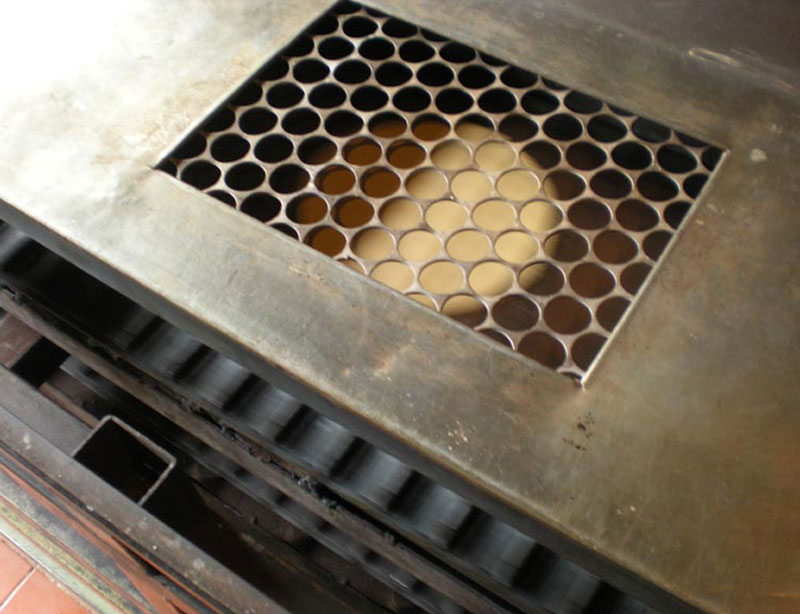

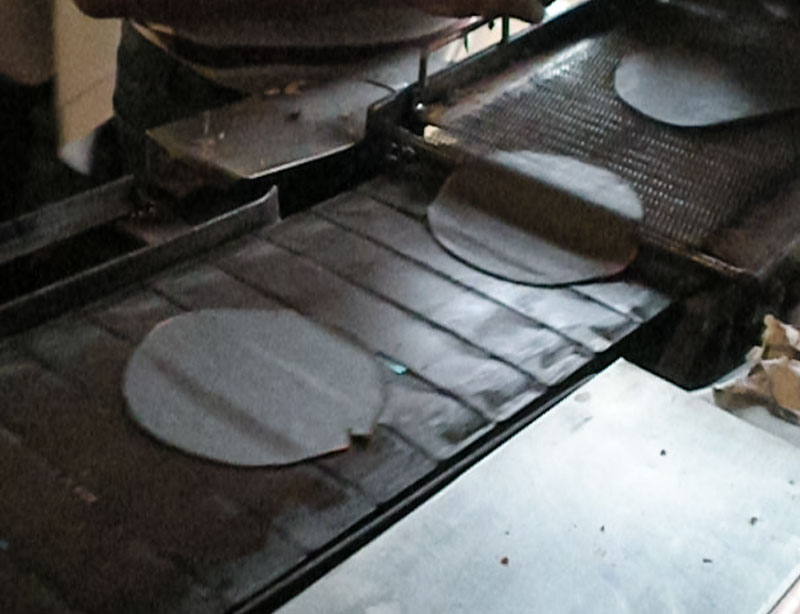
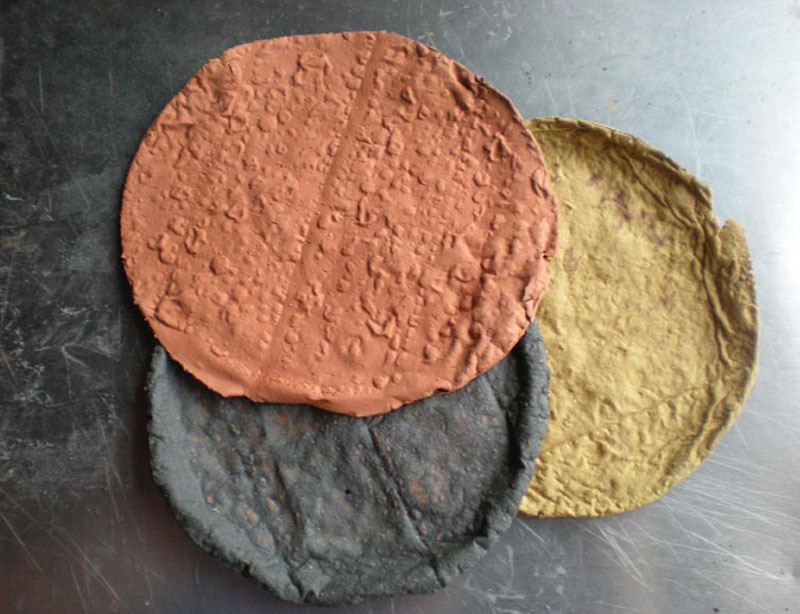
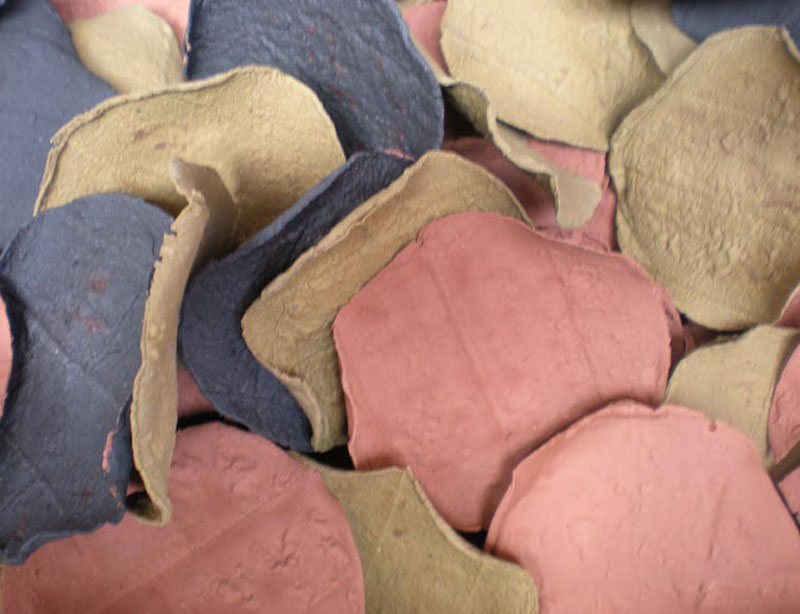
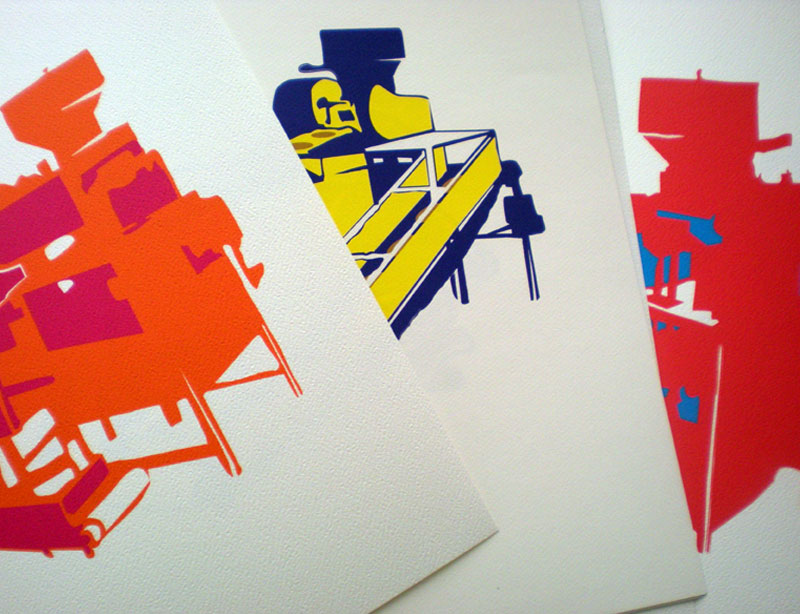



Special Thanks to Belinda Flores-Shinshillas, without her help this project would have not come to fruition, to Joel Flores for the clay and corn tortilla production, to Tori Bush from Pelican Bomb for her review and to all the supporting company and trust from the Mexican Consulate in New Orleans’ staff.